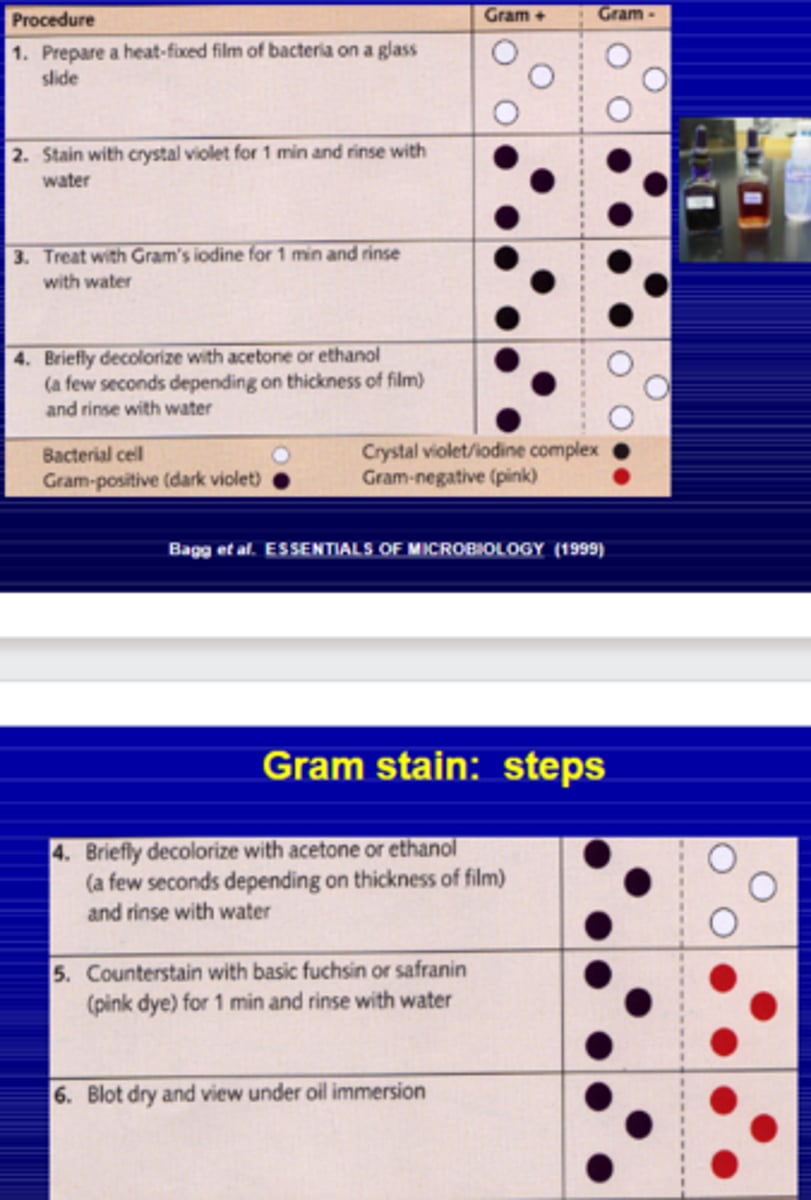Bacterial shapes, features, names, and types
1/25
There's no tags or description
Looks like no tags are added yet.
Name | Mastery | Learn | Test | Matching | Spaced |
|---|
No study sessions yet.
26 Terms
who observed the first "animacules" in water? in what year?
Antony Van Leeuwenhoek' 1685
who developed the "germ" theory of disease? In what year?
Louis Pasteur; 1858
when did Koch develop his postulates?
1876
what is the fundamental difference between prokaryotic and eukaryotic cells?
lack of organelles
identification and characterization of bacteria TYPICALLY first involves growth of laboratory "_____ _____"
pure cultures
what is a strain
any isolated colony
what are some ways cocci may be arranged?
single, paired, clusters, chains
what are some ways rods may be arranged or shaped?
single rods, chains of rods, curved rods, spiral rods
describe the 6 steps of the Gram stain and what the bacteria look like at each stage

describe the simplified scheme for bacterial identification

describe aerobic
growth requires oxygen as the final electron acceptor
describe anaerobic
uses inorganic molecules or carbon dioxide as an electron acceptor
energy-generating metabolism which involves the Krebs cycle and oxidative phosphorylation by electron transport chains
respiration
conversion of the products of glycolysis to other forms without additional ATP gains
fermentation
3 other key characteristics often used in initial bacterial classification
- growth without oxygen?
- are spores formed?
- are they motile?
what is serological subtyping?
+/- additional strain subtyping or confirmation
what is the best way to compare bacteria?
using the 16S ribosomal RNA "gene" sequence alignment for similarity
PCR can be used to obtain....
lots of DNA for sequencing part of the chromosome that codes for the ribosome's rRNA
3 domains of life
bacteria, archaea, eucarya
define "metagenomics"
the study of the structure and function of the entire nucleotide sequences isolated and analyzed from all the organisms in a bulk sample
what can metagenomics be used to obtain?
entire individual "genome sequences"
do entire genome sequences confirm 16S rRNA phylogeny?
Yes
Linnaeus classification
Domain
Phylum
Class
Order
Family
Genus
Species
a genus name followed by ssp. represents...
multiple species within that genus
the genus name alone and plural can be used without italics to indicate....
multiple types, as "staphylococci, "salmonellae" ect
beyond recognition of visible features, ____ and identification of secreted and other ____ ____ allowed further distinctions
serotyping; enzyme activities